Vasudeo S. Gaitonde was a forerunner among Indian modernist painters, noted for his affiliation with non-objective art and his meditative, atmospheric abstractions. His work does not conform to the common understanding of both colour and form and provides a deep sensory experience. As a contemporary artist, Akhilesh observes that Gaitonde’s use of colour was radical. He didn’t work with a palette in the traditional way but immersed himself in the essence of one particular colour, building a whole painting around it, at his best never returning to that shade. Akhilesh writes of Gaitonde’s art being marked by a significant working with patience and precision, that the act of waiting is as much a part of the act of creating.
1. The Challenge of Understanding Gaitonde’s Art
The challenge in writing about Gaitonde’s paintings is deciding where to begin. Should one focus on a particular phase of his work, or explore the connections between his early and later paintings? Is it possible to view his different periods from a unified perspective, or should we focus solely on the paintings that Husain admired as his singular favourite? Should we disregard his sketches, which pulse with the same energy as his paintings, or should we consider that Gaitonde’s engagement is not with colour per se, but with using colour as an integral element of his medium? His work neither fixates on nor emphasises any specific colour. His forms are illuminated from within, radiating a luminous inner light, yet infused with an underlying darkness. Sensitive viewers might mistakenly believe that Gaitonde’s primary concern is colour or that he is a master of vibrant hues. The reason for this misconception lies in the depth with which he immerses himself in the use of colour, drawing viewers irresistibly into his works.
Gaitonde doesn’t have a palette in the conventional sense. He picks a single colour and creates an entire painting around its expansion. Often, that colour never returns to his palette. His uniqueness lies in delving into the very essence of a colour, where the experience of colour becomes as vital as the experience of the painting itself. He is an artist who doesn’t play with colours but approaches them with thoughtful precision, guided more by experience than mere understanding. For Gaitonde, waiting was more significant than creating.
2. Gaitonde waited—but for what? Was it the arrival of a colour? A form? A muse?
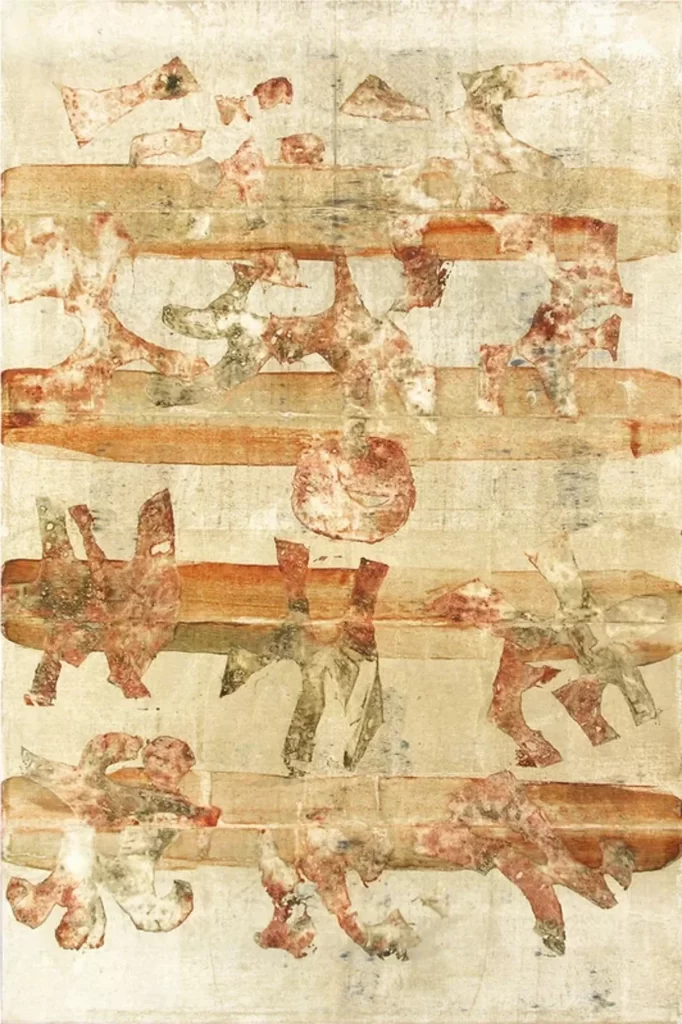
Gaitonde waited—but for what? Was it the arrival of a colour? A form? A muse? His paintings reveal this waiting, suggesting that while the life of the painting resides in its colours, there is another element even more profound—form. Undoubtedly, Gaitonde’s paintings are the work of a deeply absorbed artist. Legends about him recount his reclusive nature, his months-long contemplation of a single canvas, and the many true and false stories about meeting or failing to meet him. What is certain, however, is that he lived a life largely absent from public spaces. His solitude was his essence. While his presence in Bombay might be considered public, his move to Delhi marked a deepening retreat into isolation, with stories of dusty monsoon studios becoming part of his lore.
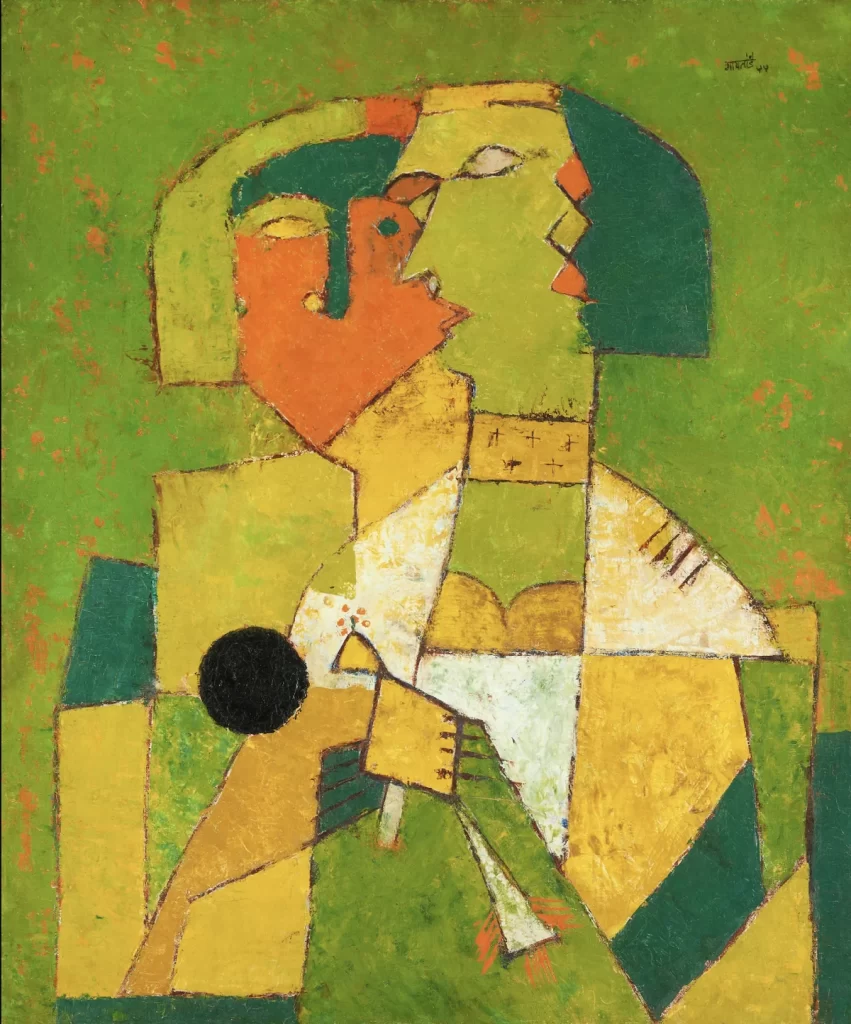
This solitude brought Gaitonde closer to a devotion to form, where visual images transformed into abstract ones. Many scholars argue that Gaitonde’s forms were inspired by script, and on the surface, this appears true. However, this is not universally applicable to all his paintings. The forms often carry the essence of script, and it is here that Gaitonde’s unique world-building begins.

The hallmark of Gaitonde’s paintings is their immersion in form. These forms seem to recall a larger essence that is Gaitonde’s true engagement. This quest for form is evident even in his early paintings and becomes increasingly abstract as he begins using rollers to create his works. Over time, this abstraction becomes the foundation of his art. His process of refining these forms often involves a subtle reliance on colour. Can we then say that Gaitonde needed support? It’s entirely plausible that he spent his life waiting for support, which he eventually found in his paintings. It is doubtful whether he could have engaged in anything other than painting, and even that he produced in limited quantity.
3. What Was Gaitonde Waiting For? For What Hope Did He Create?
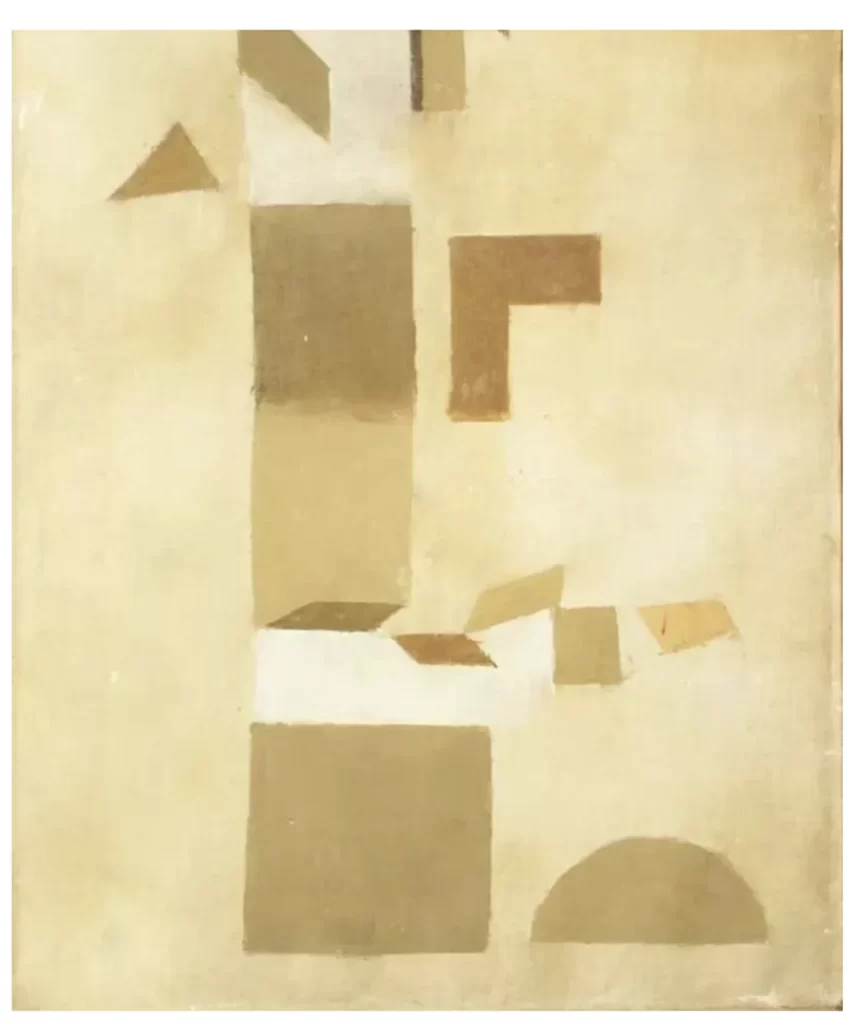
The yearning for support and the inability to attain it underpin the youthful vibrance of these works, which are now a legacy of the art world. Gaitonde’s paintings narrate a story. His world is not one of colours but of forms, which establish invisible connections. At times, these forms resemble letters; at others, they evoke skeletal cows. They embody multiple shapes and memories—Gaitonde’s memories, which he universalizes with the skill of a master craftsman. As viewers behold the refined interplay of form and colour in his works, their own memories are unlocked. Gradually, they perceive the expansiveness, or space, inherent in these paintings. They notice that these forms are created not upon a foundation but within a void. They exist in the cosmos.

Floating, interconnected by invisible threads, these forms possess a foundationless quality that astonishes—an essential trait of any masterpiece. This interplay of seeking and waiting embodies both hope and despair. What was Gaitonde waiting for? Though I never met him, the countless tales I’ve heard render him a heroic figure. Yet this hero does not battle a jungle demon to rescue a princess; there is no damsel in distress. Still, he continues to struggle. For what hope did he create? A closer examination of his works reveals that the threads of his hope are entangled in forms where hope itself seems absent. These forms do not illuminate an experienced or observed truth. They are created for creation’s sake, carrying no overt message or representation of society.
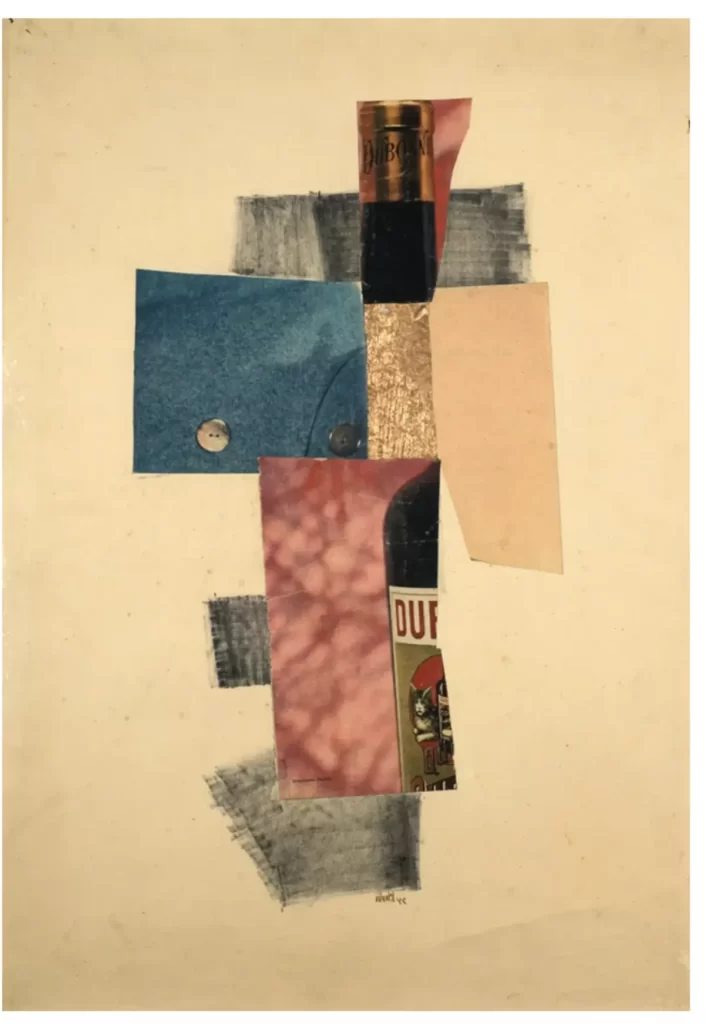
Gaitonde’s paintings are a homage to the process of creation and the joy derived from it. Detached from any external expectations, these forms expand across the canvas, paralleling Gaitonde’s increasingly insular practical world. The vastness of his internal vision finds solace in the expansiveness of his paintings.
4. Gaitonde’s Paintings Are Not Mirrors Reflecting Familiar Objects but Documents of the Turmoil Within
From the outset, Gaitonde engaged in a dialogue with the infinitude of space, evident even in his sketches. These works address an inner dialogue, perhaps tied to Gaitonde’s refined humanity. I resist connecting his works to spirituality or religious intent. Gaitonde, as an honest artist, delved deeply into his creative universe, abandoning the mundane world in pursuit of the inner truth within his forms. These forms are not representations of the real world; instead, they are steeped in an authenticity Gaitonde may have discovered in solitary defiance.
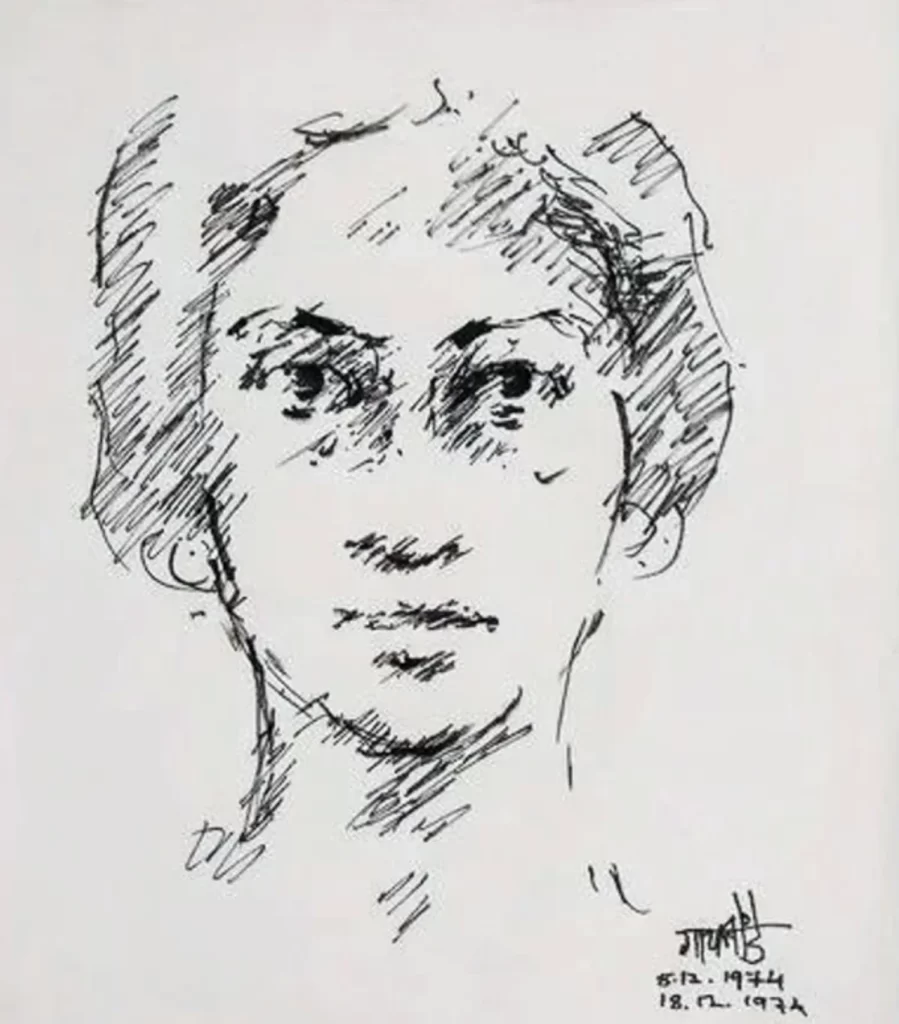
His paintings are not mirrors reflecting familiar objects but rather documents of the turmoil within an artist. They resonate with the light of desire, the gleam of envy, the darkness of longing, the tranquility of subdued hues, the turbulence of aggression, the focus of form, and the diversity of a restless mind. In their unspoken language, Gaitonde’s works articulate these experiences. He creates and lives in creation, finding hope in this act and anchoring himself in the works he produces.
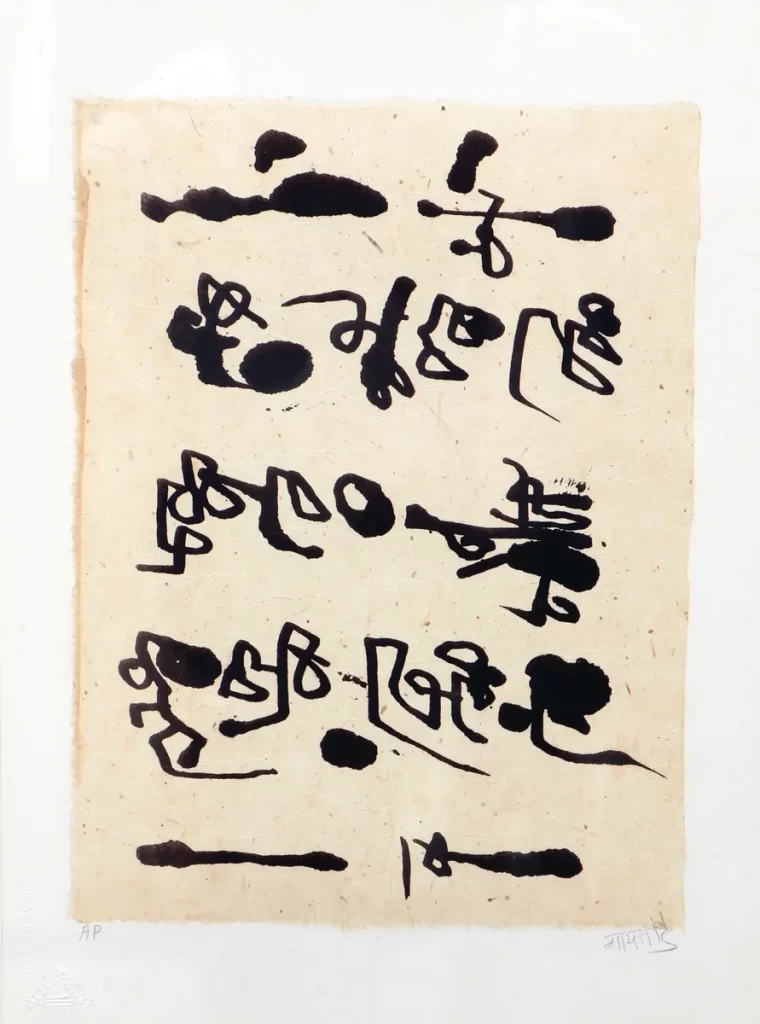
Gaitonde’s fragmented life was the concentrated solitude of his creativity. He poured himself into his paintings, experiencing the vast internal cosmos through the infinite expansion of forms. To truly experience the boundlessness of his art, one must immerse oneself in his paintings. They reveal Gaitonde’s immersion in the process of creating a pictorial language, his search for a singular void—a quest that begins but never ends.
– Book: Unke Baare Me by Akhilesh | Original excerpt in Hindi translated into English

Born in 1956, is an artist, curator and writer. He has gained worldwide recognition and appreciation for his works through extensive participation in numerable exhibitions, shows, camps and other activities.




